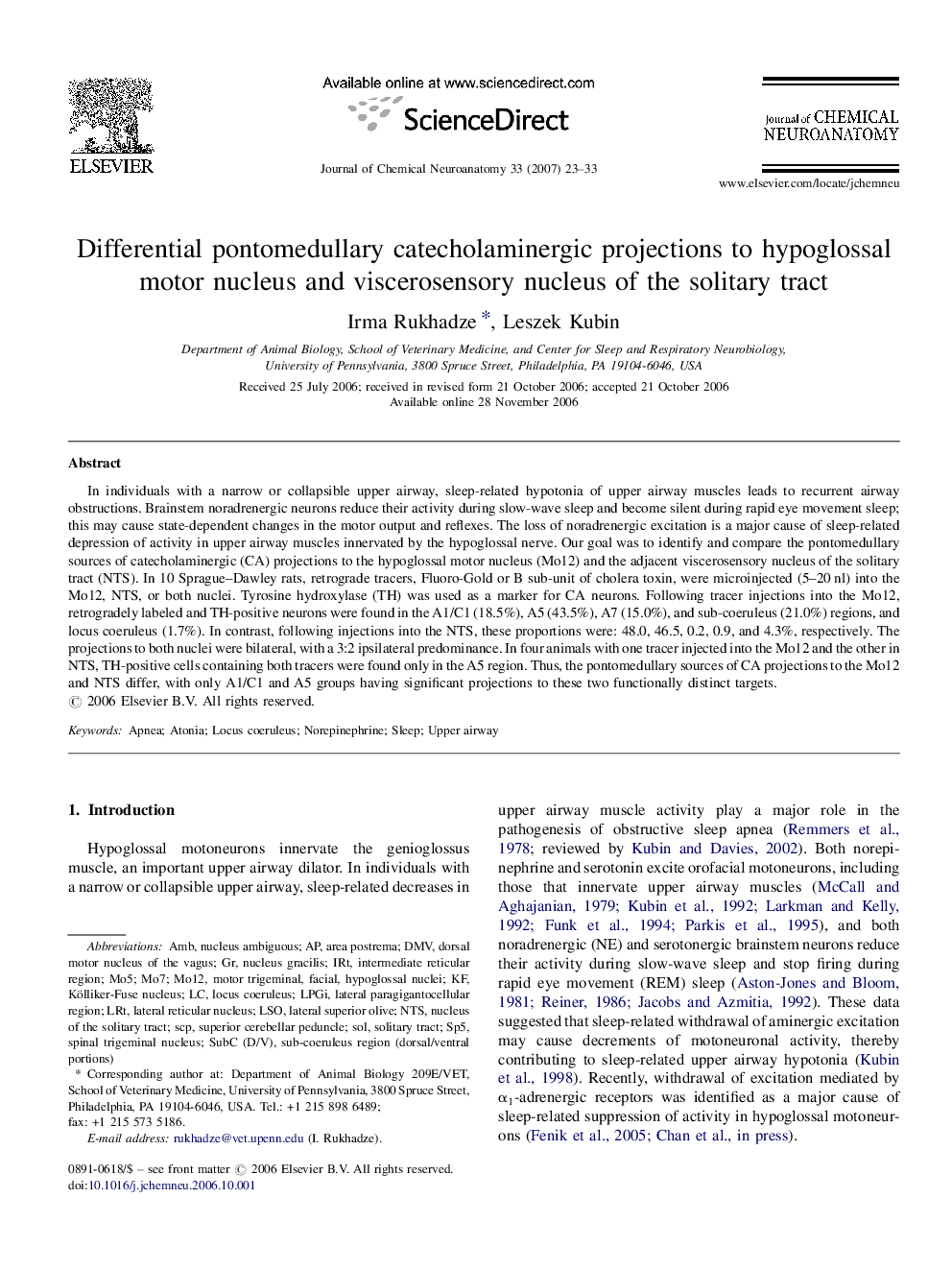| Article ID | Journal | Published Year | Pages | File Type |
|---|---|---|---|---|
| 1989207 | Journal of Chemical Neuroanatomy | 2007 | 11 Pages |
Abstract
In individuals with a narrow or collapsible upper airway, sleep-related hypotonia of upper airway muscles leads to recurrent airway obstructions. Brainstem noradrenergic neurons reduce their activity during slow-wave sleep and become silent during rapid eye movement sleep; this may cause state-dependent changes in the motor output and reflexes. The loss of noradrenergic excitation is a major cause of sleep-related depression of activity in upper airway muscles innervated by the hypoglossal nerve. Our goal was to identify and compare the pontomedullary sources of catecholaminergic (CA) projections to the hypoglossal motor nucleus (Mo12) and the adjacent viscerosensory nucleus of the solitary tract (NTS). In 10 Sprague-Dawley rats, retrograde tracers, Fluoro-Gold or B sub-unit of cholera toxin, were microinjected (5-20Â nl) into the Mo12, NTS, or both nuclei. Tyrosine hydroxylase (TH) was used as a marker for CA neurons. Following tracer injections into the Mo12, retrogradely labeled and TH-positive neurons were found in the A1/C1 (18.5%), A5 (43.5%), A7 (15.0%), and sub-coeruleus (21.0%) regions, and locus coeruleus (1.7%). In contrast, following injections into the NTS, these proportions were: 48.0, 46.5, 0.2, 0.9, and 4.3%, respectively. The projections to both nuclei were bilateral, with a 3:2 ipsilateral predominance. In four animals with one tracer injected into the Mo12 and the other in NTS, TH-positive cells containing both tracers were found only in the A5 region. Thus, the pontomedullary sources of CA projections to the Mo12 and NTS differ, with only A1/C1 and A5 groups having significant projections to these two functionally distinct targets.
Keywords
DMVLPGiMo5LRTNucleus GracilisAMBNTSSCPLSOIRTSp5atoniasuperior cerebellar peduncleApneaSleepSolitary tractUpper airwaylateral superior oliveSolarea postremalocus coeruleusnorepinephrinenucleus of the solitary tractlateral reticular nucleusspinal trigeminal nucleusNucleus ambiguousdorsal motor nucleus of the vagusKölliker-Fuse nucleus
Related Topics
Life Sciences
Biochemistry, Genetics and Molecular Biology
Biochemistry
Authors
Irma Rukhadze, Leszek Kubin,
